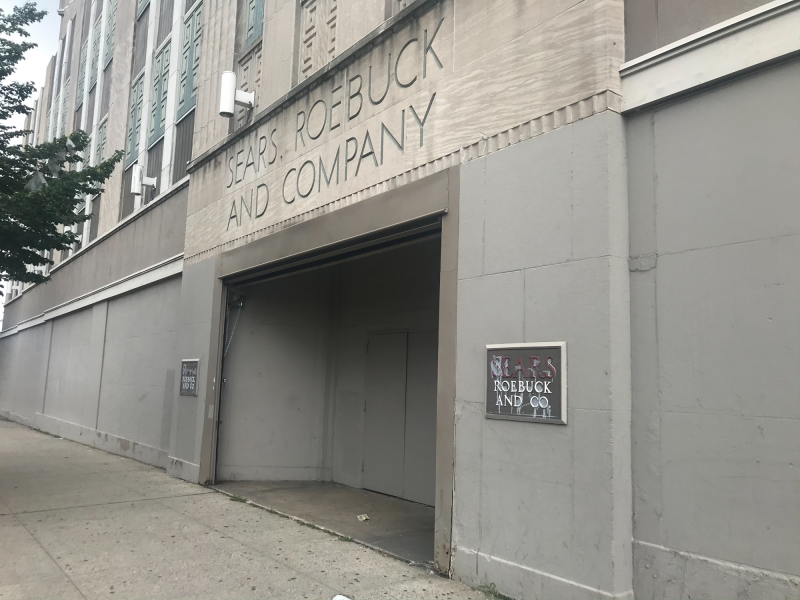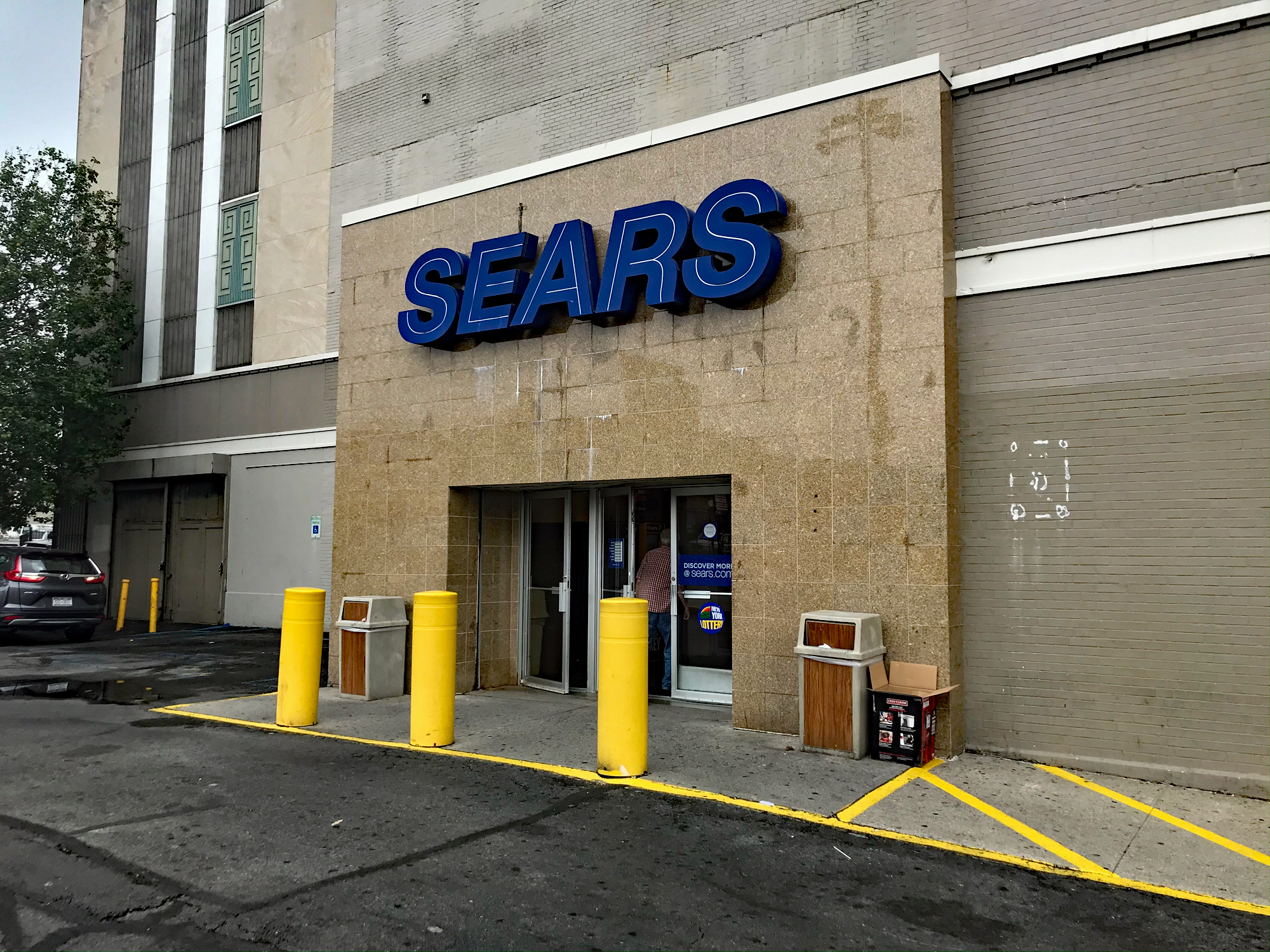- Though Sears narrowly escaped its demise when it was bought out of bankruptcy by ESL Investments in February, the ailing department store is still showing signs of struggling.
- The subsidiaries of Sears Holdings Corporation, including Kmart, are now operated by a parent company, Transform Holdco LLC. In June, Transform Holdco LLC acquired the outstanding shares of Sears Hometown and Outlet Stores.
- We visited the only standing Sears department store in New York City and got a sense of the issues that the beleaguered company continues to face.
- Visit Business Insider’s homepage for more stories.
It’s been a tough year for department stores, but particularly for Sears.
The 126-year-old company is hanging by a thread after narrowly escaping liquidation. In February, Sears’ chairman, Eddie Lampert, won court approval to buy Sears out of bankruptcy, ultimately allowing 400 stores to stay open and preserving 45,000 jobs.
Though Lampert’s Hail Mary pass prevented Sears from closing its doors for good, the company is still gasping for air. In April, Sears revoked its life-insurance policies for some of its 90,000 retirees, a move expected to leave many of them ineligible for additional coverage.
That same month, the company shuttered its "store of the future" in Oak Brook, Illinois, fully liquidating its inventory and closing the doors for good only six months after reopening. The demise of the store - which took a year to renovate and was intended to be a prototype for a modernized Sears store - is telling for the future of the company, Neil Saunders, a managing director at the consultancy GlobalData Retail, said in a statement in April.
"It underlines the fact that Sears does not have a credible plan for its long-term survival," Saunders said. "Making stores a bit nicer and reducing space are sensible steps, but they do not represent a holistic solution."
In addition to experimenting with store design in the past year, Sears also tested concepts like a Sears-Kmart hybrid store, which opened in Brooklyn, New York, in June 2018. Though the store is still standing, the format remains just as clunky and disorganized a year later.
Here's what we saw on a recent visit to the Brooklyn store:
As we approached the Sears-Kmart store in Brooklyn, we saw remnants of an earlier, more prosperous time for the store's now defunct holding company, Sears, Roebuck, and Co.
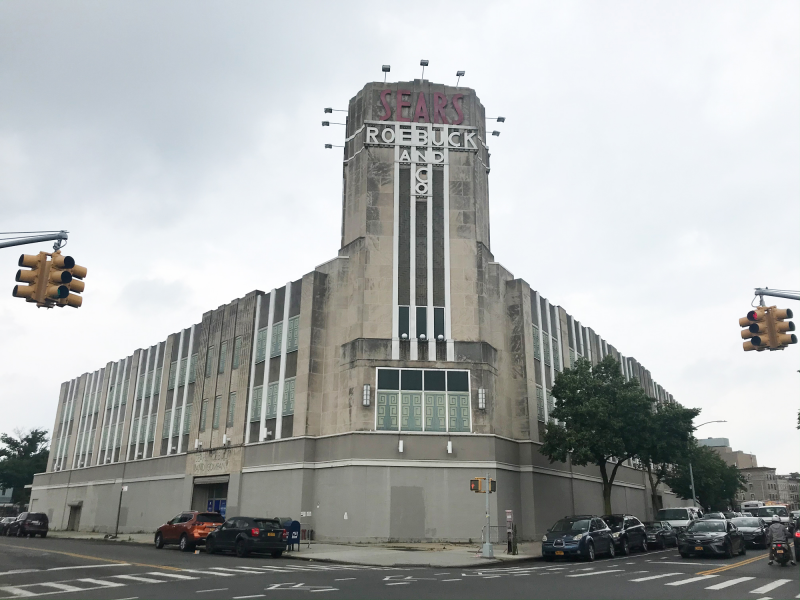
Several parts of the outside facade had clearly seen better days.
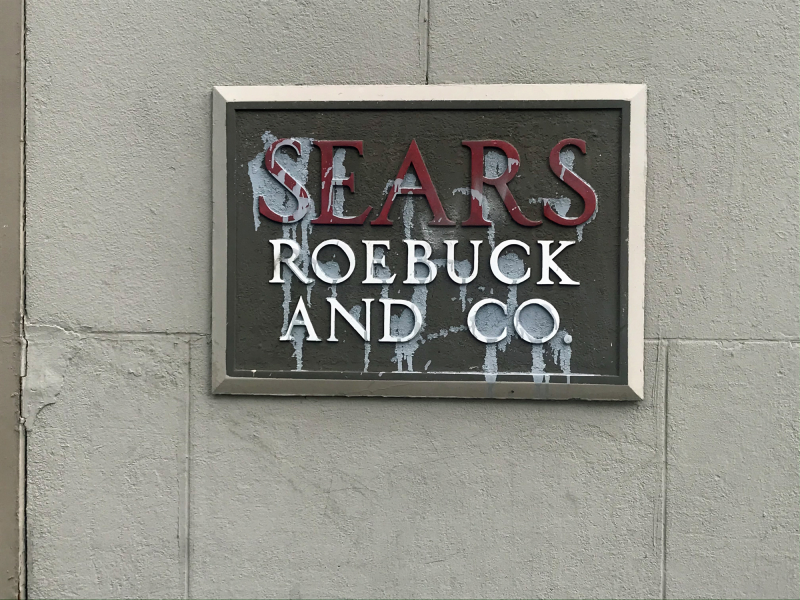
Locating the actual entrance to the store was like navigating a maze, and required completely walking around the perimeter of the store and entering a parking lot.
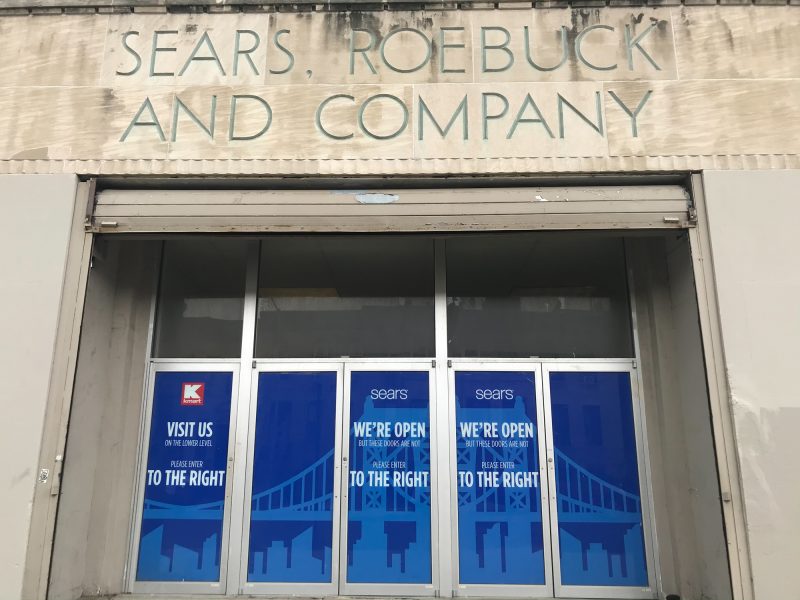
At long last, we found the entrance to the parking lot.
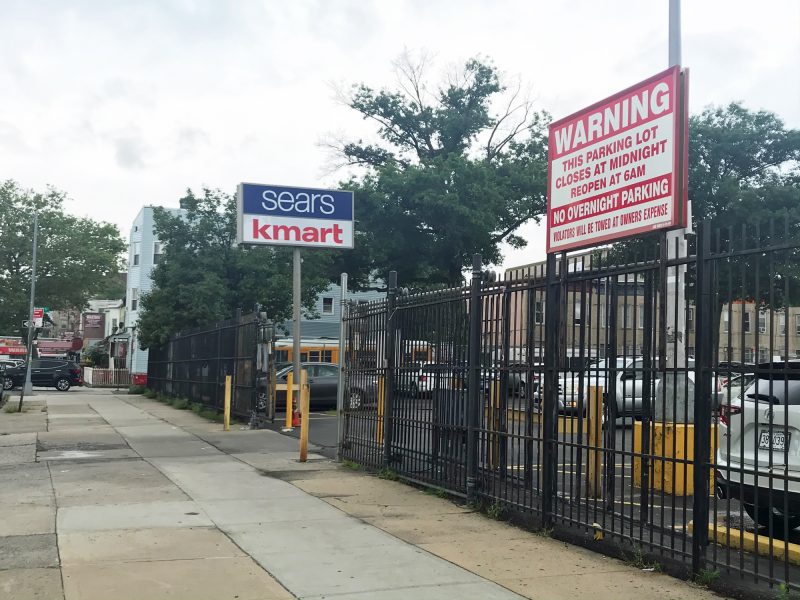
And finally reached the entrance, after first accidentally walking into a Sears storage facility.
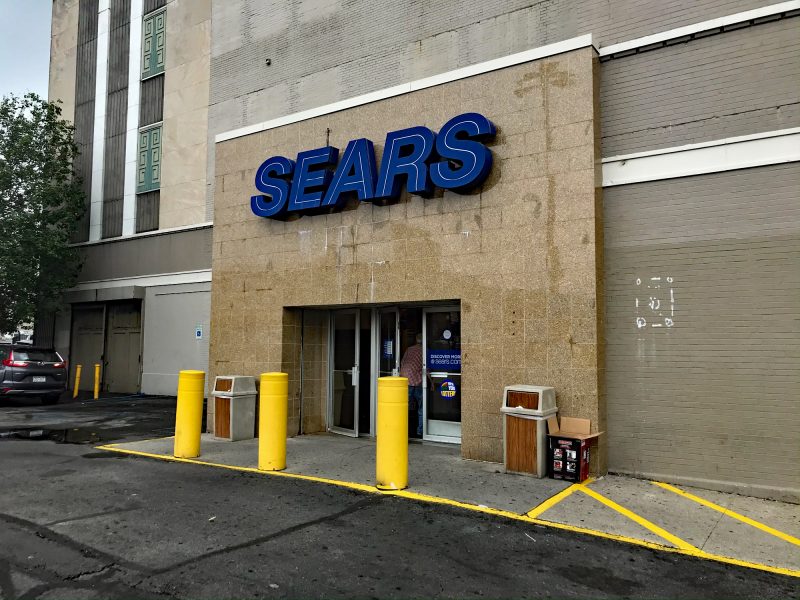
The entrance way included an odd assortment of machines, and an obscured sales sign.
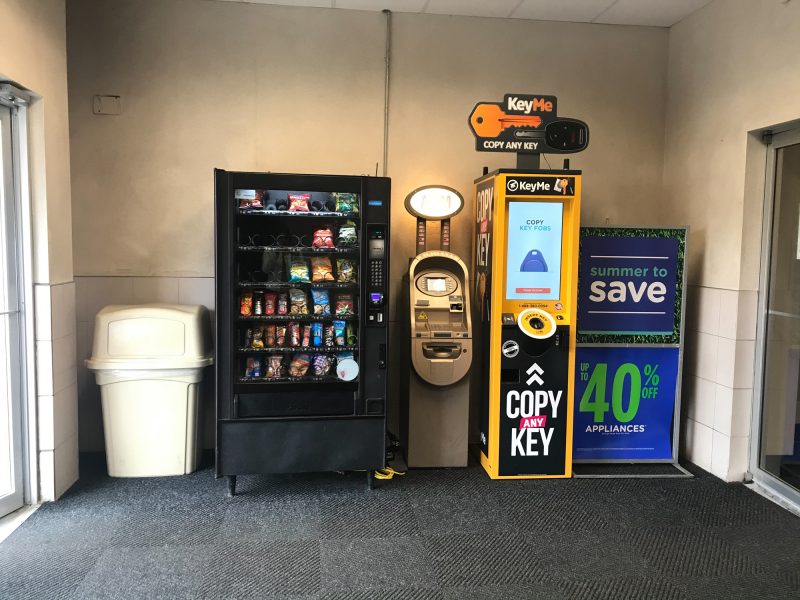
Still, there were a decent amount of shoppers for a Tuesday afternoon.
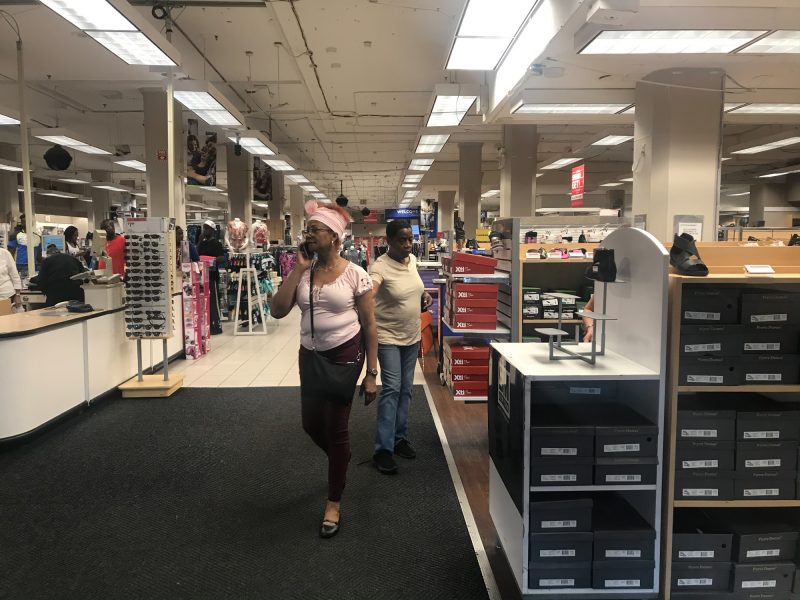
The first thing we noticed was there were several empty racks throughout the store. Here was one we spotted in the accessories department.
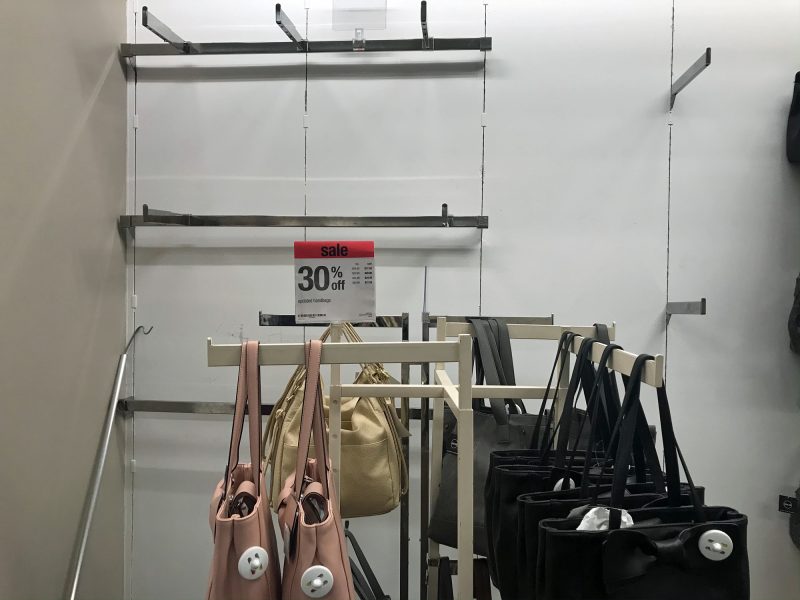
And another we saw in the children's toy department.
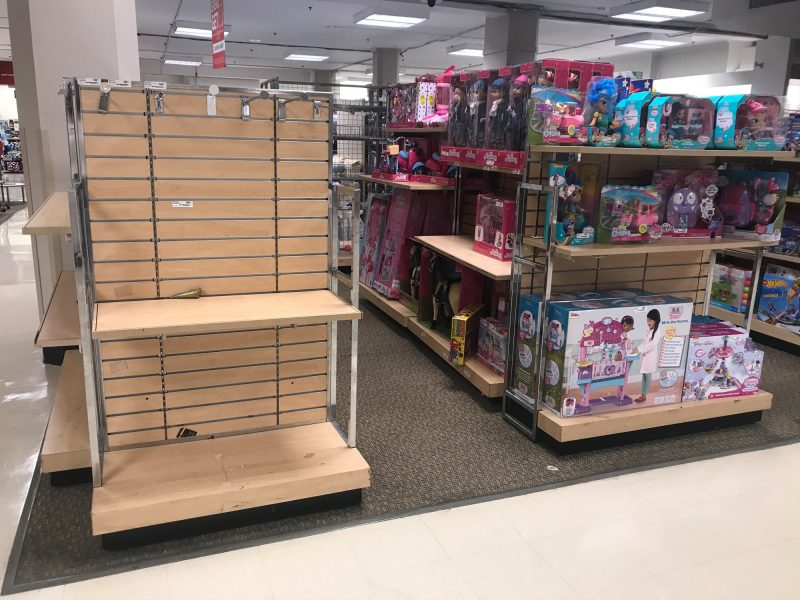
In other areas, including home goods, the shelves were sparse.
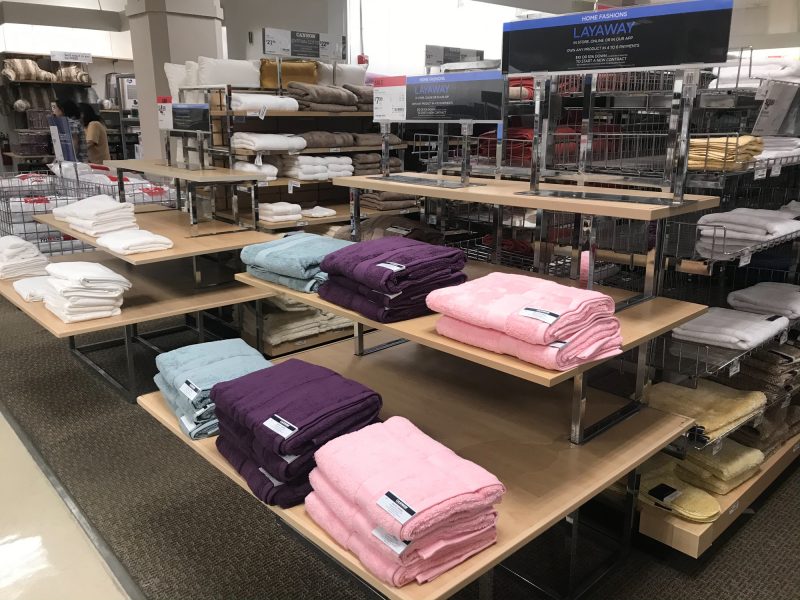
The adjacent appliance section was equally as sparse.
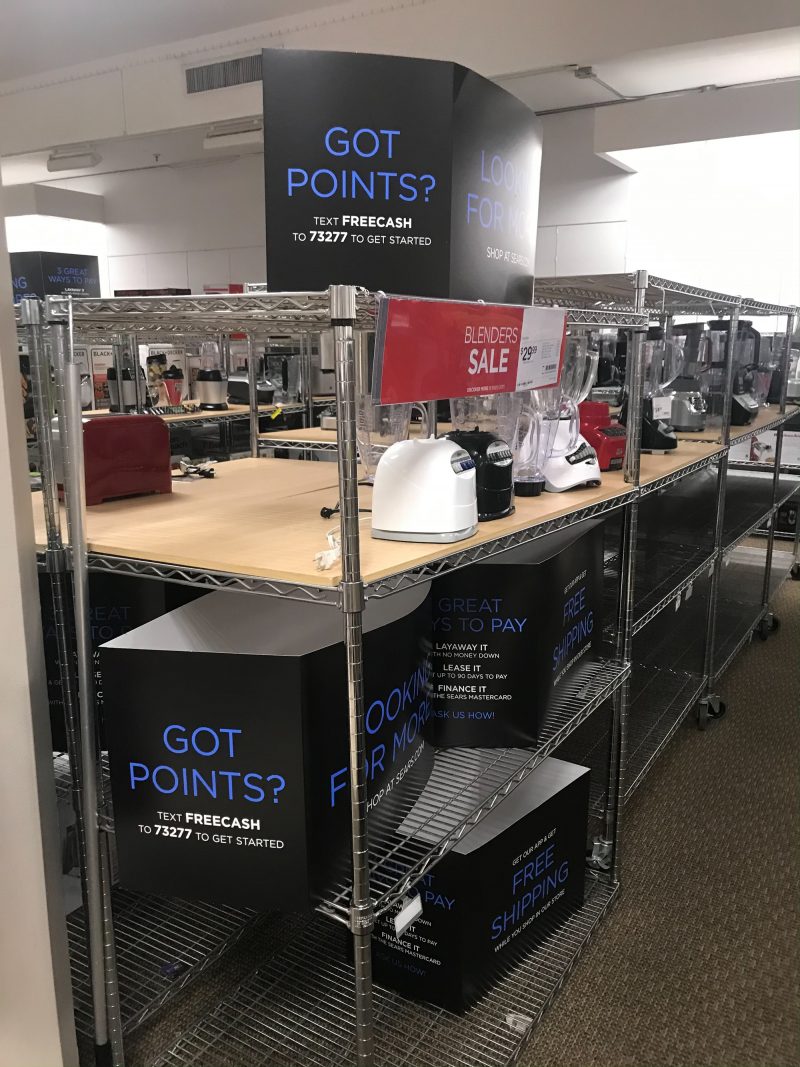
Other parts of the store were especially messy. In the women's department, we found scarves strewn across the ground.
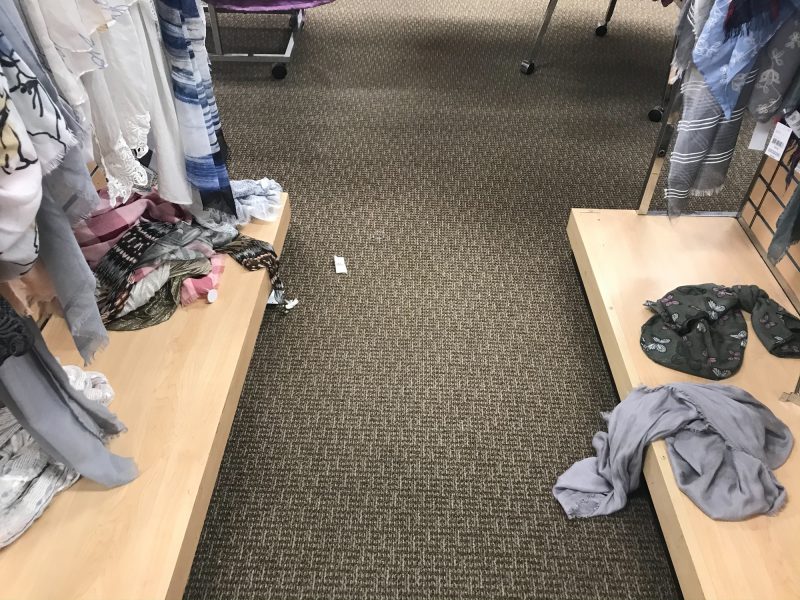
This nearby display of bags was in a similar state of disarray.
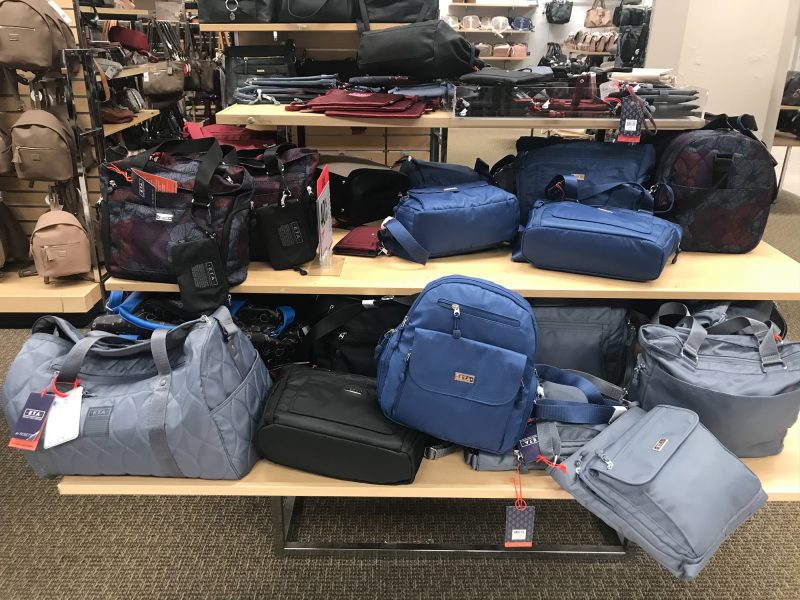
In the men's department, boxers and briefs were piled haphazardly on a rolling shelf sticking out halfway into the aisle.
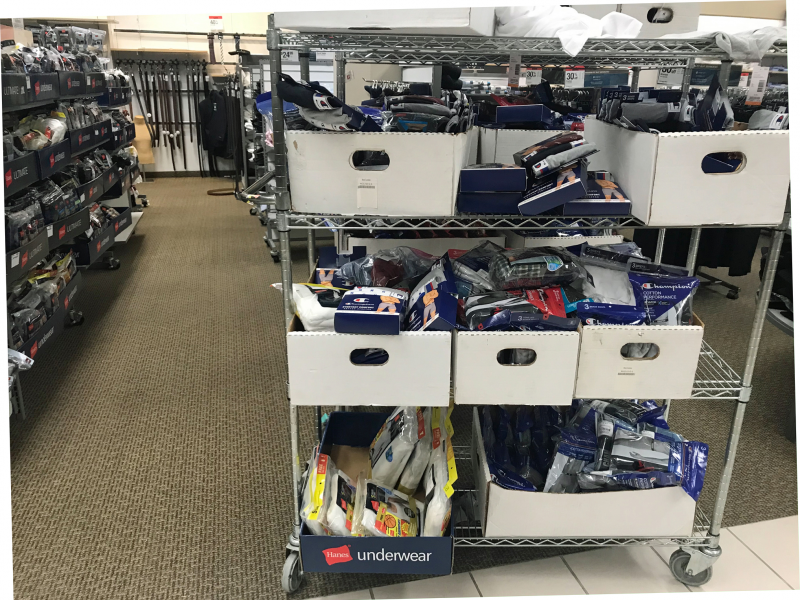
As we kept walking, we saw more strange displays in the middle of aisles.
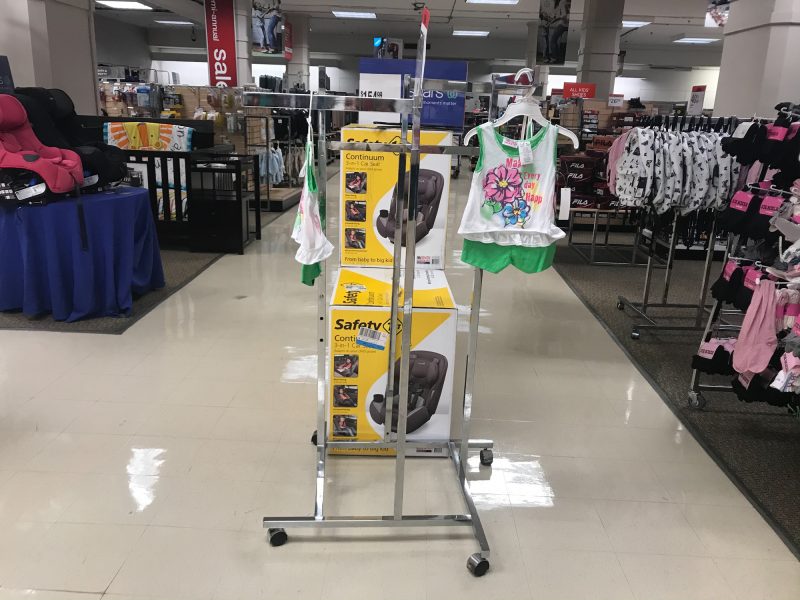
The tidiest sections of the store were dedicated to Sears' private label lines, like Simply Styled. However, these areas received minimal foot traffic on the day of our visit.
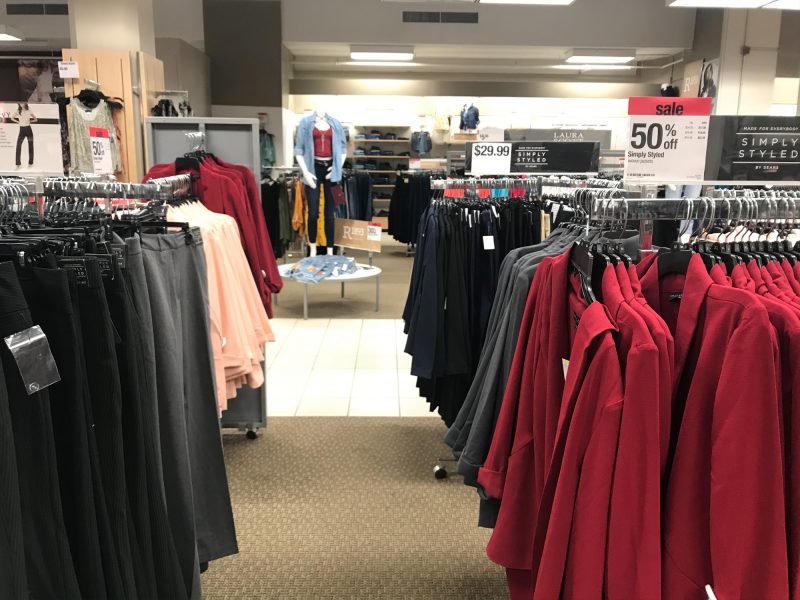
The shoe department also features private label products made by Roebuck & Co.
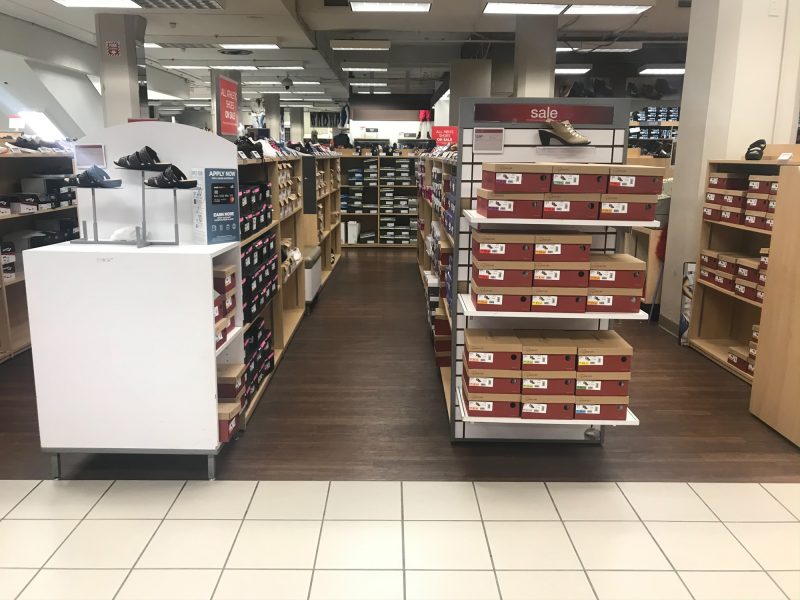
The store tried to incorporate some local flare in one section that sold New York-area sports team products, but it felt a bit contrived.
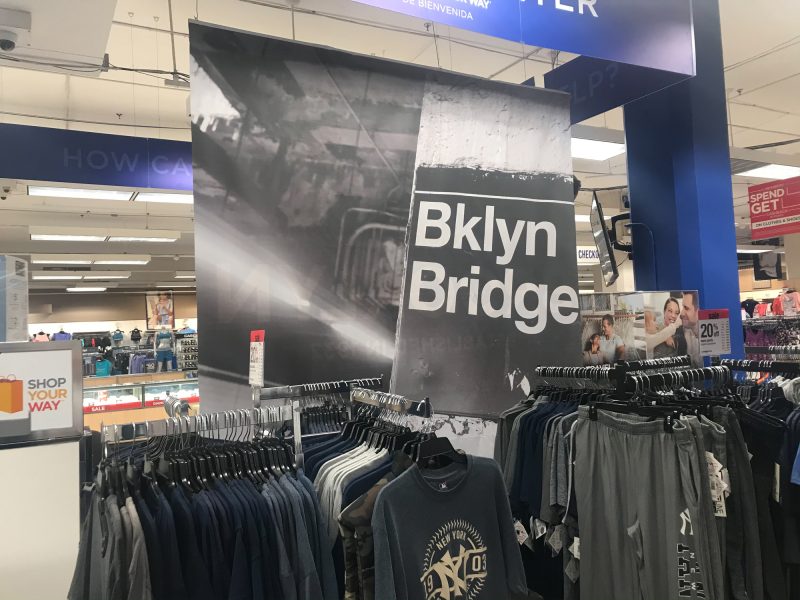
We found various unmanned kiosks encouraging shoppers to join the Sears membership program.
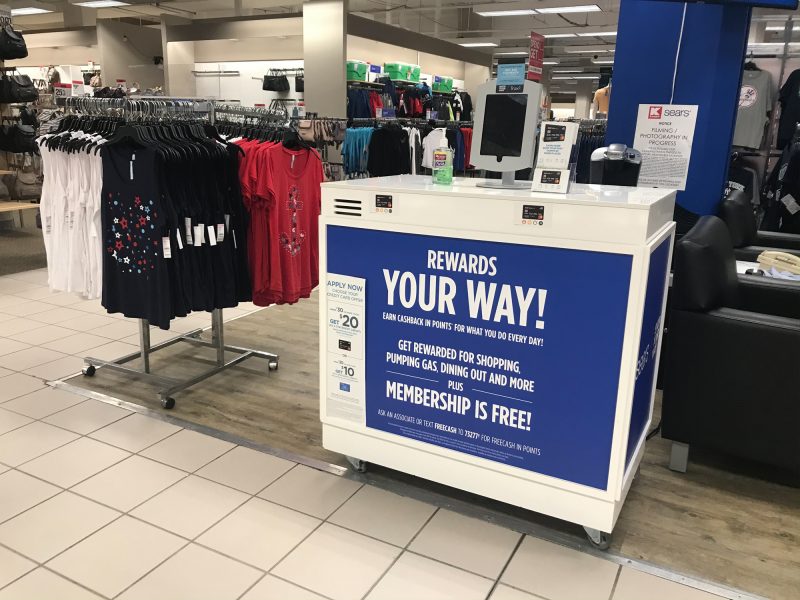
The fitting rooms were especially bleak. We didn't see a single shopper trying on apparel, nor a sales associate.
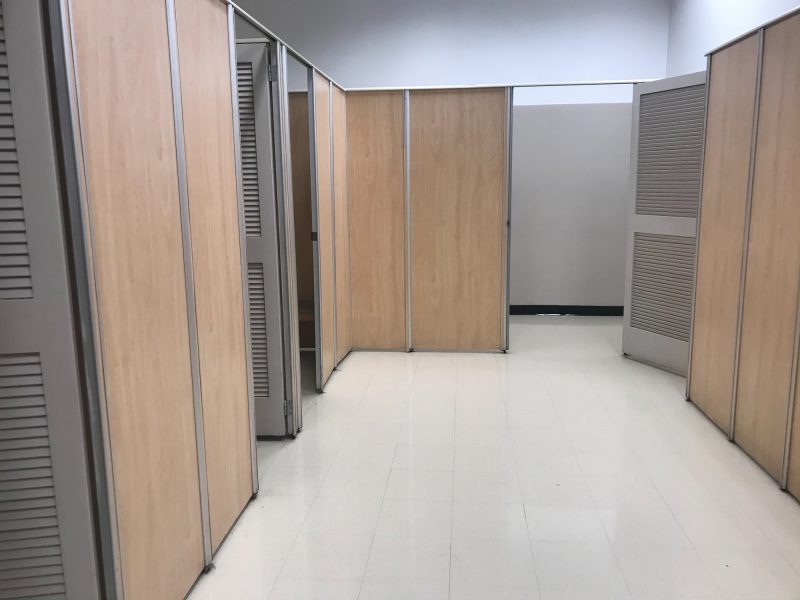
There were also signs scattered around the store promoting the Sears Online Layaway program, where shoppers can make multiple payments on select items.
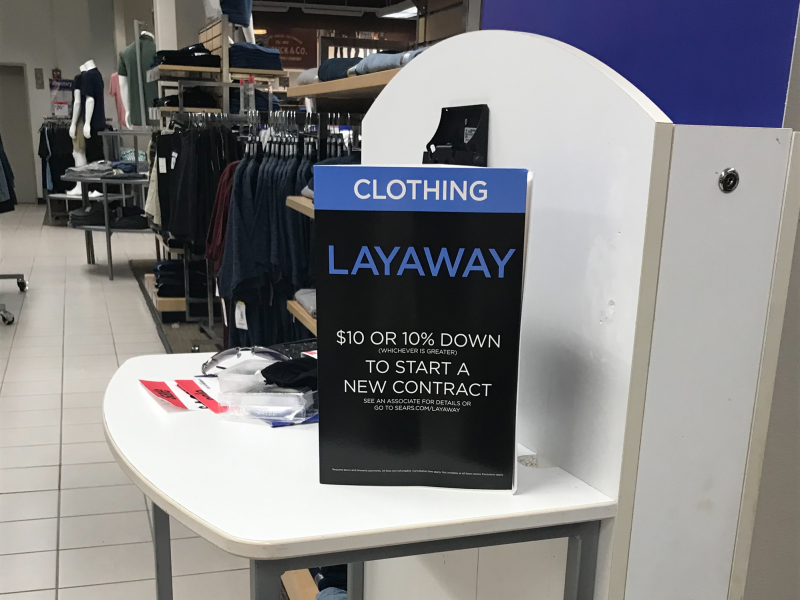
After we had seen all the Sears had (and didn't have) to offer, we followed the signs to the Kmart.
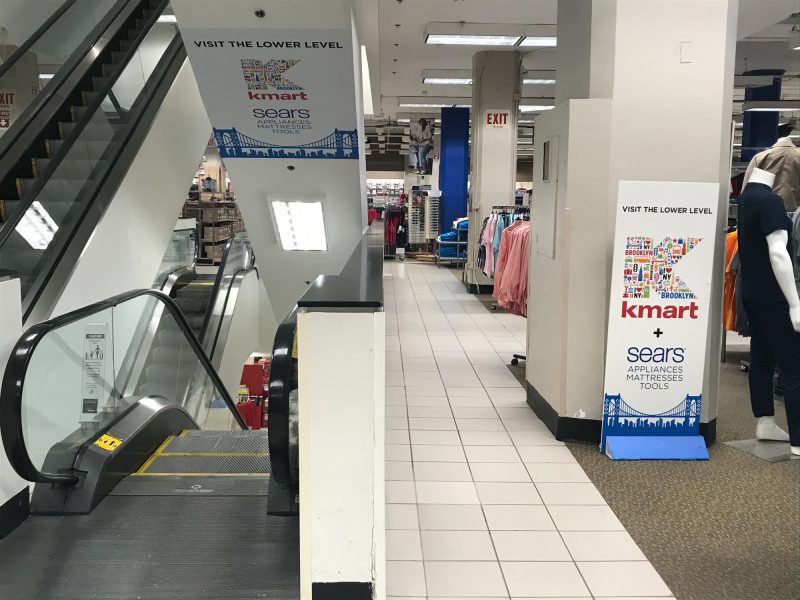
However, once we reached the bottom of the escalator, there was no Kmart to be found.
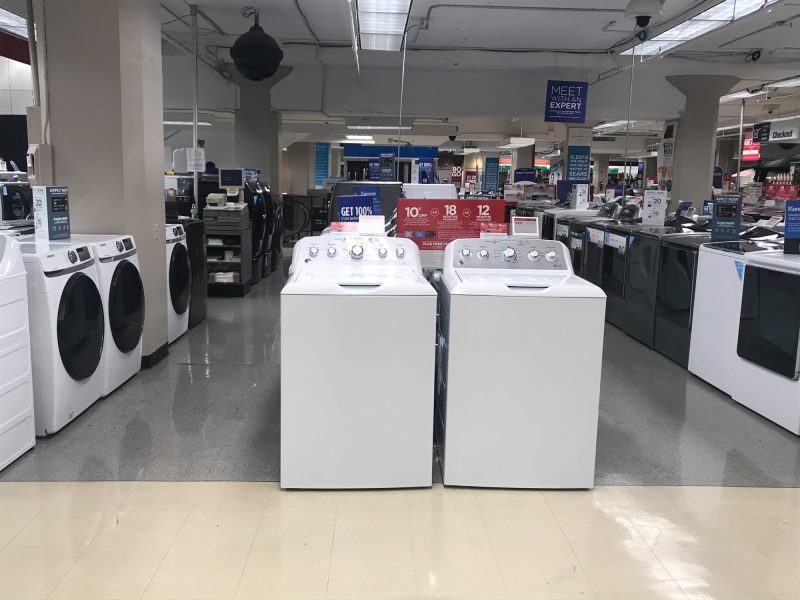
We wandered around the appliance section for awhile, stumbling upon more disorganized products...
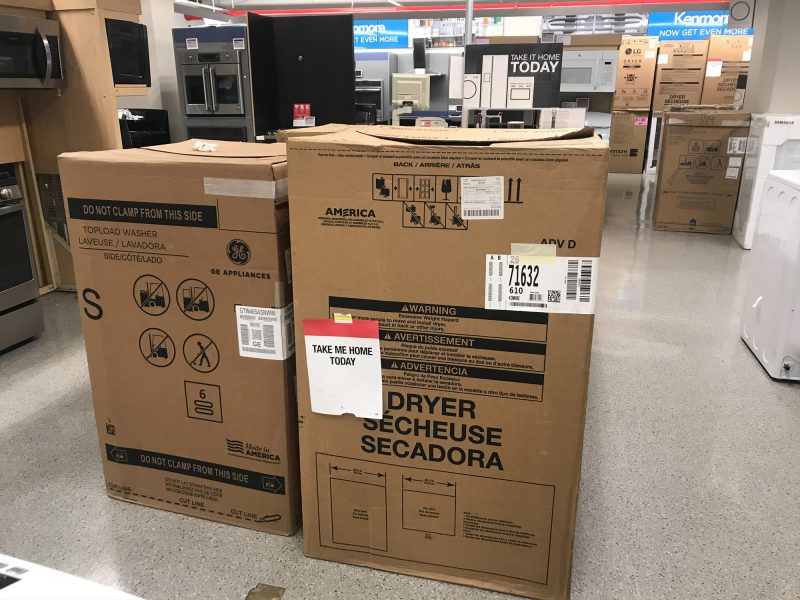
And unsorted boxes of goods begging to be put on shelves...
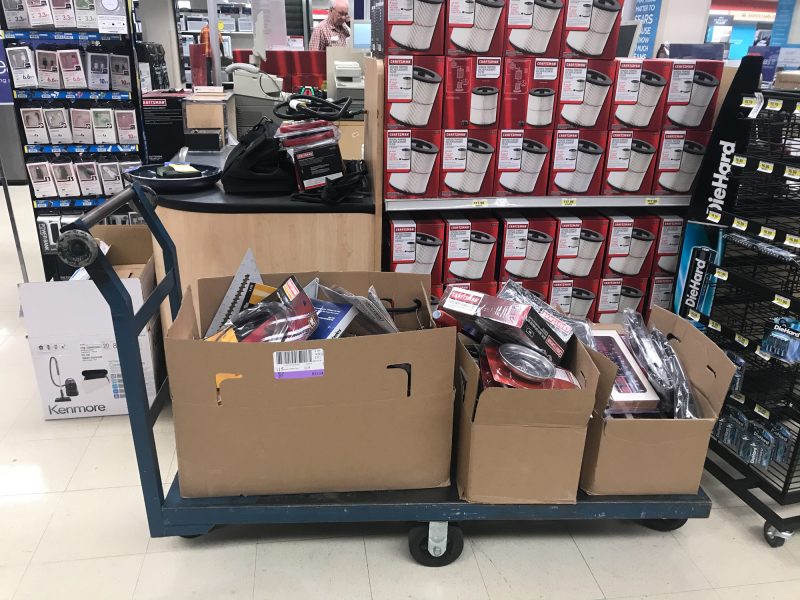
And half-empty displays.
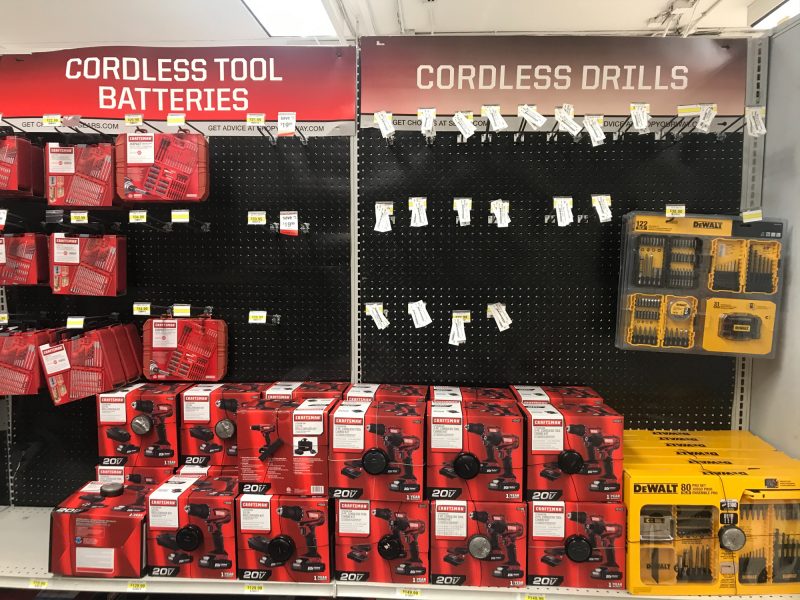
We circled around past the mattress and Sears optical sections, still searching for the Kmart store.
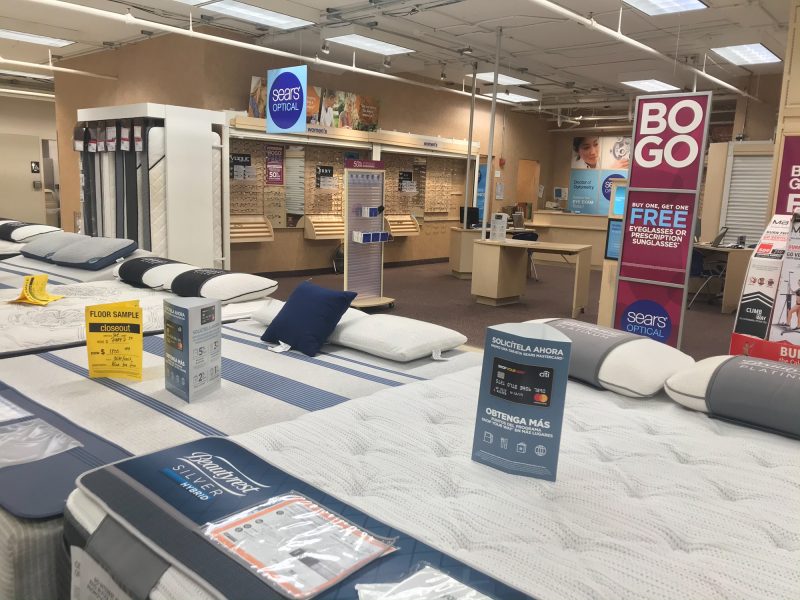
Eventually we found a sign for the Kmart, just past the mattresses. It has a separate barrier and register, making it feel like a completely different store.
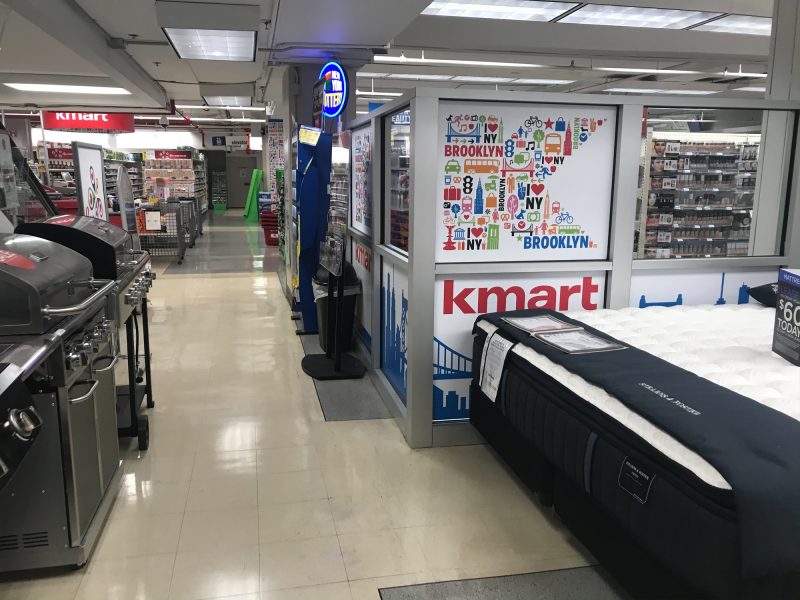
Once we were finally inside the Kmart, there were very few people to be found. Shoppers are required to make Kmart purchases separately in this area and are prohibited from bringing un-purchased items into Sears.
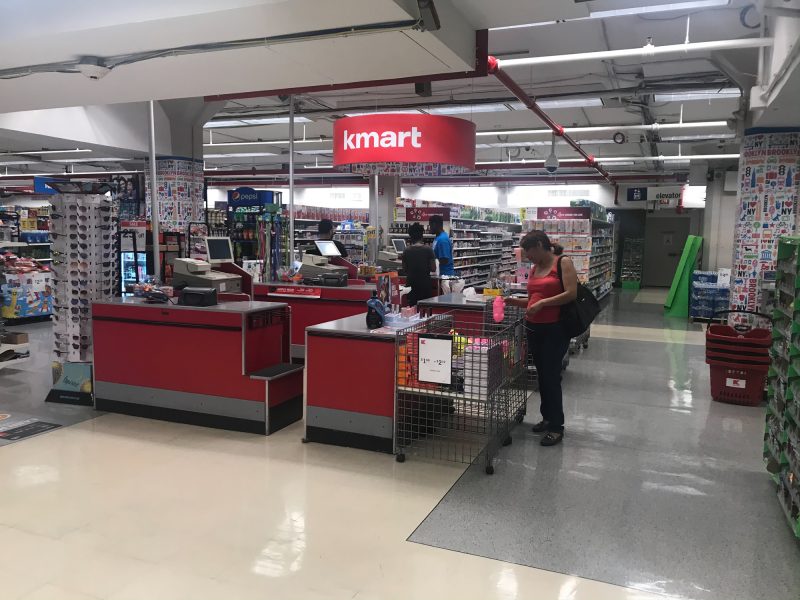
However, the shelves were significantly more stocked and organized than the Sears store.
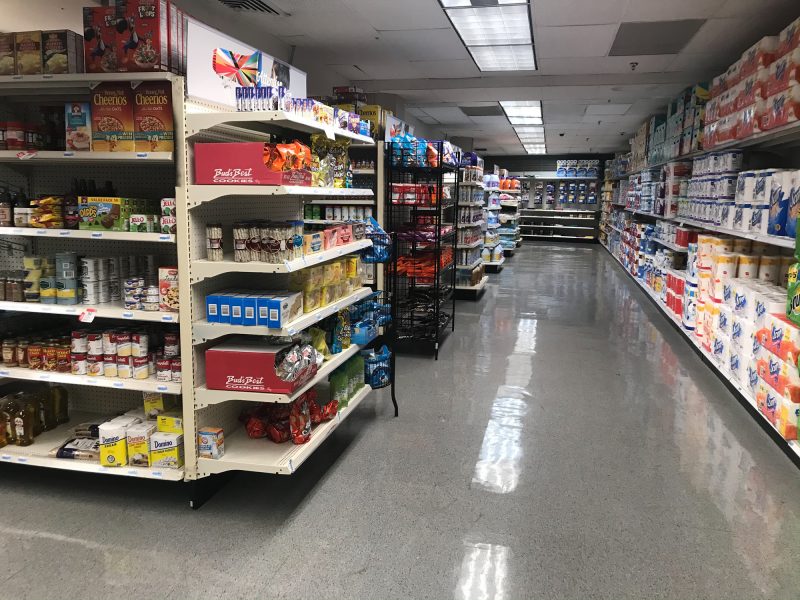
Ultimately, it seems like not even the help of an experimental Kmart concept store will get Sears out of the hole.
